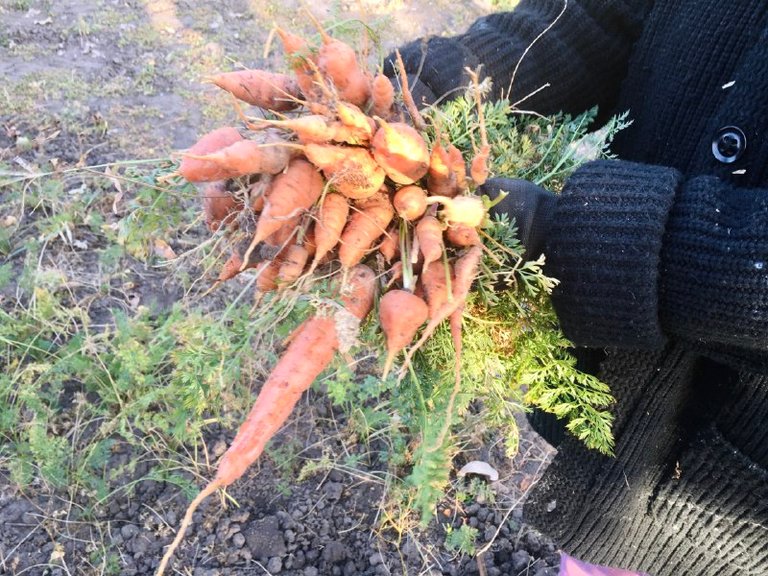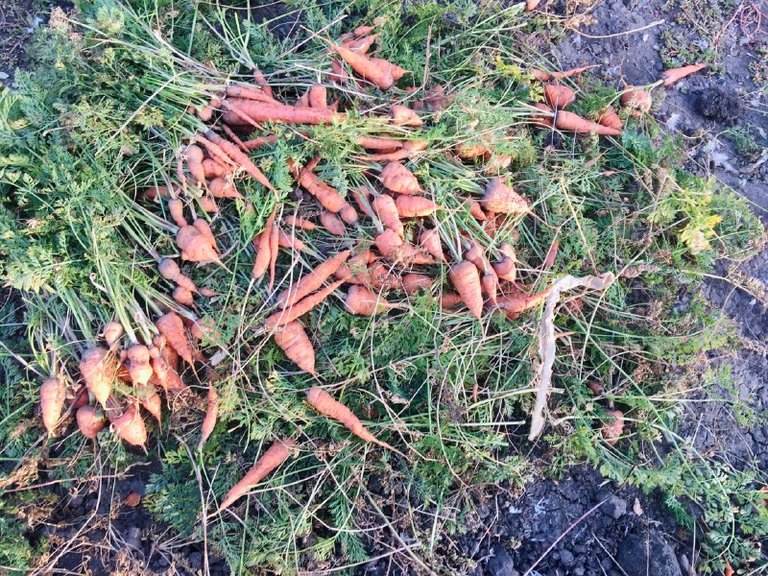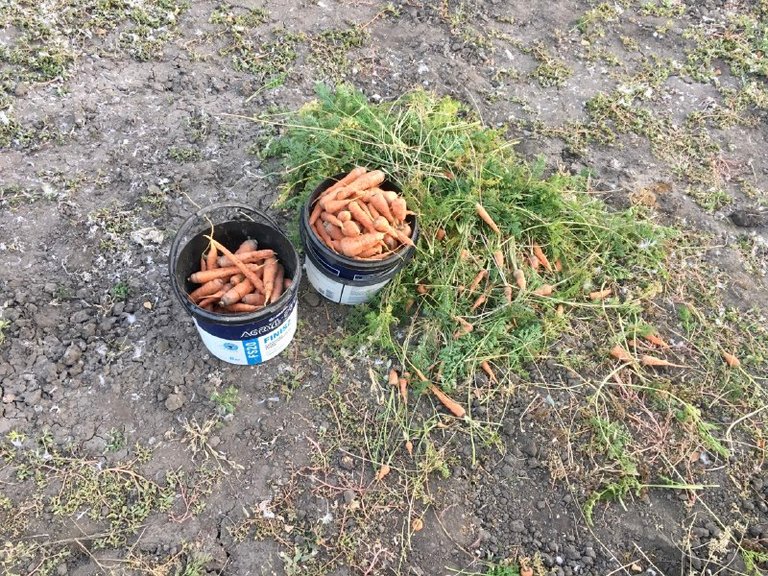
Привіт! Вже майже промайнув тиждень жовтня. На городі майже нічого не залишилося, окрім кормових буряків та помідорів. До речі, останні непогано стигнуть дотепер. Та сьогодні вирішив зупинитися на моркві.
Морква дуже погана в цьому році. І знову я звинувачую у всьому відсутність дощів. Навіть за минулий місяць пройшов лише один невеличкий дощик. Земля тверда, немов асфальт. Я ледве не зламав лопату, доки викопував врожай моркви. Та й хіба це можна назвати врожаєм, так трішки овочів. Та хоча ця морква й дрібна, вона має солодкий дуже приємний смак, зовсім не такий як морква, придбана в супермаркеті.

Плоди тонкі й короткі, а більшу частину взагалі довелося викинути: дуже дрібна. Я вирішив зробити кілька світлин плодів моркви й піймав себе на думці, що взагалі не знаю історії цього овочу.
Ми добре знаємо, що в моркві є каротин, багато вітамінів. Її рекомендують вживати в будь-якому вигляді для профілактики цілого ряду захворювань, наприклад, при остеохондрозі, хвороби системи ЖКТ, нирок тощо. Вона навіть виводить з організму радіоактивні речовини. А звідки ж взявся цей коренеплід?

Дослідники вважають, що сучасна морква є нащадком дикої. Остання росла та, ймовірно, росте й досі на території сучасного Афганістану, причому в гірській місцевості. Вона гірка на смак й має фіолетовий колір. Спочатку люди вживали в їжу зелень, потім насіння, якому приписували лікувальні властивості. Все це відбувалося за кілька тисячоліть до нашої ери.
А ось про моркву жовтого кольору відомо вже з 5 століття нашої ери. Ще пізніше, через 3-4 століття, з'явилась червона морква. Її отримали в результаті схрещення білої та фіолетової. Морква червоного кольору поширювалася по Європі тривалий час — з 12 по 15 століття.
Всім добра!
Harvesting carrots: almost the last inhabitants of my garden
Hello, it's almost the end of the month of October. There is almost nothing left in the garden except for fodder beets and tomatoes. By the way, the latter are still ripening well. But today I decided to focus on carrots.
Carrots are very bad this year. Again, I blame it on the lack of rain. Even last month, there was only one small rain. The ground is hard, like asphalt. I almost broke my shovel while digging up the carrot crop. And it's hardly a harvest, it's just a few vegetables. But even though these carrots are small, they have a sweet, very pleasant taste, not at all like carrots bought in the supermarket.
The fruits are thin and short, and most of them had to be thrown away: they were too small. I decided to take some photos of carrot fruits and found myself thinking that I don't know the history of this vegetable at all.
We know very well that carrots contain carotene and many vitamins. It is recommended to use it in any form to prevent a number of diseases, such as osteochondrosis, diseases of the gastrointestinal system, kidneys, etc. It even removes radioactive substances from the body. Where did this root vegetable come from?
Researchers believe that modern carrots are a descendant of wild carrots. The latter grew, and probably still grows, in the territory of modern Afghanistan, in mountainous areas. It tastes bitter and has a purple color. At first, people ate the greens, then the seeds, which were attributed with medicinal properties. All this happened several millennia before our era.
But yellow carrots have been known since the 5th century AD. Later, 3-4 centuries later, red carrots appeared. It was obtained by crossing white and purple carrots. Red carrots spread across Europe for a long time - from the 12th to the 15th centuries.
Good luck to everyone!
Text and photo content are the property of the author, unless otherwise noted. Publications and photos are not published on other social media.
люблю моркву))
треба різної різної весною насадити
а от дощі...вода проблемна тема